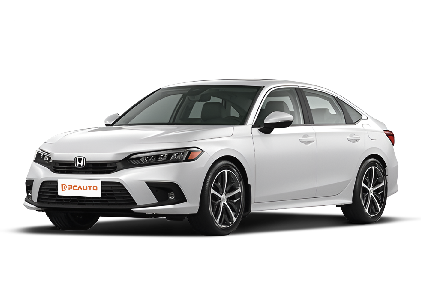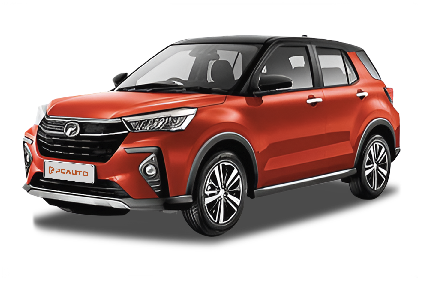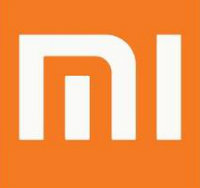Q
What kind of warranty does the 2020 Kona have?
The 2020 Hyundai Kona in Malaysia typically comes with a factory warranty of 5 years or 150,000 km, whichever comes first. This covers major mechanical components like the engine and transmission. The battery pack, on the other hand, gets an exclusive 8-year or 160,000 km warranty. It's worth noting that specific terms might vary slightly between dealerships or due to promotional offers, so it's always a good idea to check with an authorized dealer for the latest warranty details before making your purchase.
Important to remember: wear-and-tear items like brake pads and tires usually aren't covered, and neither is damage caused by improper use or failure to follow the maintenance schedule. That's why sticking to regular servicing at authorized service centers is key to keeping your warranty valid. For the electric variant, the Kona Electric, the high-voltage battery system typically has an even longer warranty – standard industry practice to protect the heart of an EV.
Malaysian buyers should also ask about extended warranty options, which some dealers offer as an add-on. It's something to consider based on your individual driving needs and how long you plan to keep the car.
Special Disclaimer: This content is published by users and does not represent the views or position of PCauto.
Popular Models
Related Q&A
Q
How many gears does a 2020 Hyundai Kona have?
The transmission specs for the 2020 Hyundai Kona in Malaysia depend heavily on the trim and powertrain you pick. The sporty 1.6L turbo petrol variant comes mated to Hyundai's 7-speed dual-clutch transmission (7DCT), while the 2.0L naturally aspirated model sticks with the tried-and-tested 6-speed automatic (6AT). For those who prefer shifting gears themselves, some base trims might still offer a 6-speed manual (6MT) option.
Now, gear count isn't just a number—more ratios can mean smoother acceleration and better fuel economy. The dual-clutch setup here is snappy and efficient, perfect if you like a more engaging drive with quick shifts. On the flip side, the conventional auto in the 2.0L is all about reliability and low-maintenance peace of mind.
Malaysian buyers should really think about their daily grind too. City driving with constant stop-starts demands different transmission behavior than highway cruising, and Hyundai's Smart Drive Mode lets you toggle between Eco, Normal, or Sport settings to adapt—smart for tailoring responsiveness.
It’s worth noting rivals in this segment, like the Honda HR-V or Toyota C-HR, typically use CVTs or 6ATs too, but each brand tunes their transmissions with distinct characteristics. At the end of the day, nothing beats a test drive to feel which one gels best with your driving style.
Q
Are there any recalls on the Kona 2020?
Yep, the 2020 Hyundai Kona did have a recall issued in Malaysia and global markets due to some technical hiccups. The main issues were a software glitch in the Electronic Brake Control Unit (HECU) that could lead to longer braking distances, and a potential short-circuit risk in the high-voltage Battery Management System (BMS) – that one was specific to the all-electric version. Hyundai Malaysia has been reaching out to affected owners through their authorized service centers to offer free inspections and repairs.
If you own one, I'd suggest heading to Hyundai Malaysia's recall inquiry page on their website and plugging in your Vehicle Identification Number (VIN) to check if yours is included. Or, just give their customer service hotline a ring – that's probably easier.
Important to note though: car recalls are a standard safety procedure, showing the manufacturer takes responsibility for their products. All recall info in Malaysia is also publicly posted on the Road Transport Department (JPJ) website, so that's another place to check. And don't sleep on those email or SMS notifications from the company – make sure you're regularly checking those too.
If your Kona is on the recall list, don't delay booking that service appointment. It's all about keeping you safe on the road. Hyundai's tech team has already rolled out software updates to fix the HECU issue and beefed up the battery pack's protective measures for the EVs. Once fixed, the cars meet all safety standards, no worries there.
Q
Does the 2020 Kona have engine problems?
The 2020 Hyundai Kona did see some recalls in certain markets due to engine issues, primarily revolving around potential faults in the 2.0L naturally aspirated and 1.6L turbocharged petrol engines. These included concerns that the piston ring design might lead to abnormal oil consumption or even engine damage. However, these problems are typically resolvable through official recall campaigns, which offer free inspections, repairs, or component replacements. Malaysian owners can check if their vehicle is affected by entering their VIN on Hyundai Malaysia's official website.
For Malaysian consumers, regular maintenance and prompt response to recall notices are key to preventing engine troubles. This is especially true in our tropical climate, where keeping an eye on oil condition and cooling system maintenance becomes even more crucial. Hyundai's Smartstream engine technology generally has a solid reliability record. If you're considering a used 2020 Kona, prioritise ones with a complete Hyundai Service Record, and pay extra attention to any unusual noises during cold starts or if the oil warning light illuminates.
In fact, regardless of the brand, turbocharged models in Malaysia's hot and humid environment should have their oil change intervals shortened to 5,000-7,000 kilometers. This simple step goes a long way in extending engine life.
Q
Is the 2020 Kona AWD?
If you're in Malaysia and looking at the 2020 Hyundai Kona, you can actually get it with all-wheel drive (AWD). That version comes packing a 1.6-liter turbo engine mated to a 7-speed dual-clutch gearbox. The AWD system here automatically shuffles torque between the front and rear wheels depending on the road conditions, which is pretty handy for boosting stability on wet roads or when you're carving through corners. It makes sense for Malaysia's rainy weather or those occasional weekend getaways out of the city.
Now, a quick heads-up: AWD models typically guzzle a bit more fuel than their front-wheel drive counterparts, and they'll also cost you a little extra upfront. So, buyers really need to think about how they'll actually use the car to decide if it's worth it. Let's be clear though, the Kona's AWD is more about tackling light urban adventures rather than full-on off-roading. It's perfect for daily commuting with the added bonus of handling some casual weekend trips.
Malaysian shoppers might also want to cross-shop with other AWD offerings in the segment, like the Honda HR-V or Mazda CX-3. But honestly, nothing beats a test drive to feel how each one handles—you'll notice the different tuning styles. And don't forget to check out the warranty terms and service packages from local dealers to make sure the long-term running costs align with what you're expecting.
Q
Does the 2020 Kona have good resale value?
The 2020 Hyundai Kona holds its value pretty decently in Malaysia's used car market, sitting somewhere above average. How well it retains its worth really comes down to the trim level, how well it's been looked after, and what the market's craving. The higher-spec 1.6T turbo models, with their punchier performance, usually fetch more interest – and better resale – than the base variants.
As a compact SUV, the Kona brings some solid firepower to the used scene thanks to its sharp looks, generous kit, and frugal fuel consumption. If you're looking at a Kona under five years old with a clean service history and reasonable mileage, you're generally looking at retaining around 55% to 65% of its original value.
Key things that keep that resale value up? Regular servicing at authorized Hyundai centers, a clean, accident-free title, and any remaining factory warranty. Trust me, hanging onto those complete service receipts is a smart move for when you decide to sell.
Malaysian buyers shopping used should definitely cross-shop against rivals like the Honda HR-V or Toyota C-HR to get a feel for the market, but remember, specs and engine options can vary big time between brands, so compare apples to apples.
If you're thinking about reselling down the line, stick with popular colors like white or silver – they tend to have broader appeal. And skip the wild mods; keeping the car as close to factory spec as possible will make it easier to sell and help maintain that value.
Q
How long will a 2020 Kona last?
The 2020 Hyundai Kona typically has a solid lifespan in Malaysia, usually clocking in at around 150,000 to 200,000 kilometers or over 10 years. Of course, this really hinges on how well the owner maintains it and the driving conditions it's subjected to. Keeping up with regular oil changes, transmission fluid swaps, coolant top-ups, and sticking to the manufacturer's recommended service schedule are absolute musts if you want to keep your Kona running strong for longer.
Malaysia's hot and humid climate can be tough on rubber components and electronics, so it's smart to pay extra attention to wear-and-tear parts like chassis bushings and wiper blades – they tend to deteriorate faster here. For the electric variant, the Kona Electric, you're looking at a battery lifespan of roughly 8 to 10 years, though you can expect some gradual decrease in battery performance over time. Hybrid models generally fare a bit better in the battery department, often lasting beyond 10 years.
Hyundai's warranty coverage in the Malaysian market is pretty comprehensive, which gives owners that extra peace of mind. It's also worth pointing out that long-term reliability has a lot to do with driving habits too – avoiding aggressive driving and overloading the vehicle will definitely help minimize mechanical wear and tear. As the Kona ages, stepping up the maintenance frequency and using genuine parts can go a long way in keeping it in good shape. We'd recommend Malaysian owners make regular trips to authorized service centers for professional check-ups to ensure their Kona stays in tip-top condition.
Q
What is the 2020 Hyundai Kona's horsepower?
The 2020 Hyundai Kona offers two powertrain options in the Malaysian market. The 1.6-liter turbocharged petrol engine variant pumps out 177 horsepower and 265 Nm of torque, paired with a 7-speed dual-clutch transmission—perfect for drivers who crave a bit more zip. On the other hand, the 2.0-liter naturally aspirated engine delivers 149 horsepower and 180 Nm of torque, mated to a 6-speed automatic gearbox, making it a solid choice for everyday commuting.
As Hyundai's compact SUV, the Kona really shines in Malaysia's urban driving scene thanks to its nimble size and sleek styling. It's also packed with Hyundai's SmartSense safety suite, which includes Lane Keeping Assist and Autonomous Emergency Braking—features that add a welcome layer of security behind the wheel.
One thing to keep in mind: powertrain specs can vary slightly from market to market, so it's always a good idea to check with your local dealer for the exact details before making a purchase. Also, sticking to regular maintenance schedules and using the right viscosity oil will go a long way in keeping that engine running strong and maintaining its horsepower output.
Q
What is the 2025 Mercedes car and driver?
Mercedes-Benz is gearing up to roll out a bunch of new models in 2025, including refreshed versions of the C-Class, E-Class, and the all-electric EQ lineup. These rides are likely to pack more advanced autonomous driving tech and hybrid powertrains, aiming to boost fuel efficiency and take the driving experience up a notch – perfect for Malaysian consumers who want that sweet spot between luxury and eco-friendliness. As a global leader in the automotive game, Mercedes has always been big on tech innovation. Take their latest MBUX smart infotainment system and DRIVE PILOT autonomous driving assist, for example – expect those to get even better in the 2025 models. For the Malaysian market, Mercedes' localised services and solid after-sales network mean owners stay hassle-free. And let's not forget our climate and road conditions – Mercs here usually come with cooling systems that can handle the tropical heat and tough, durable materials. If you're keen on specific models, keep an eye on Mercedes-Benz Malaysia's official website or hit up your nearest authorised dealer for the latest deets on specs and pricing.
Q
Who is the backup driver for Mercedes in 2025?
Mercedes hasn't officially locked in their 2025 F1 reserve driver yet, but looking at how they've been nurturing talent lately, the safe bet is they'll tap someone from their young driver program. Names like Mick Schumacher, who's already on board as a brand ambassador, or Stoffel Vandoorne, the FE ace, are in the mix. Both have actual F1 race experience under their belts and know their way around the team setup. For Malaysian fans, getting a handle on what a reserve driver does is pretty key. They're not just there to pinch-hit if a main driver gets sidelined – they’re knee-deep in simulator work, helping develop the car, and even doing tire tests. Remember Nyck de Vries? Back when Petronas was backing Mercedes' junior program, he cut his teeth in a similar role. It's worth noting that F1 teams usually keep their reserve lists under wraps until pre-season testing or unless there's an emergency. And hey, thinking about Sepang – that old F1 haunt of ours – its sweltering heat and humidity would throw a unique curveball at any reserve driver trying to get up to speed. Mercedes, being the top dogs in the hybrid era, have always had a youth system and reserve setup that others in the paddock look up to. If you’re keen for updates, your best bet is to keep an eye on their official socials.
Q
What is the best luxury hybrid car 2025?
The top luxury hybrid models to watch in Malaysia's 2025 market are set to be flagship hybrids like the Lexus LS 500h, BMW 745e, and Mercedes-Benz S 580e. These rides blend impressive fuel efficiency with premium features, perfectly matching Malaysian buyers' desire for both comfort and eco-friendly performance. The Lexus LS 500h stands out as a crowd favorite thanks to its refined hybrid setup and whisper-quiet driving experience. Over at BMW, the 745e caters to driving enthusiasts with its sharp plug-in hybrid tech and sporty tuning, while the Mercedes S 580e wows with its opulent interior and cutting-edge tech. Malaysia's climate and road conditions demand tough battery performance, and all these models come equipped with advanced thermal management systems to keep those batteries running steady even in the heat. On top of that, the Malaysian government's tax incentives for hybrid vehicles help lower the upfront costs, making these luxury hybrids even more tempting. For shoppers eyeing a hybrid, beyond brand and performance, it's smart to check out the local after-sales service network to ensure hassle-free ownership down the line.
Latest Q&A
Q
What Raptor has a 6.2 L V8?
In the Malaysian market, the Raptor model equipped with a 6.2L V8 engine represents the first generation of the Ford F - 150 SVT Raptor (2010 - 2014). This high - performance pickup, built specifically for off - roading, delivers 411 horsepower and 588 Nm of torque from its naturally aspirated 6.2L V8 engine. Mated to a 6 - speed automatic transmission and 4WD system, it’s a perfect match for Malaysia’s diverse terrain, think muddy trails, gravel tracks, you name it. It’s worth noting that starting with the second generation (2015 onwards) and now the third - gen Raptor, Ford made the switch to a 3.5L EcoBoost V6 twin - turbo setup. While the displacement dropped, the turbo tech boosted both fuel efficiency and power delivery. For Malaysian buyers who crave the distinctive roar of a big V8 engine and linear power delivery, tracking down a first - gen 6.2L model through parallel import channels is an option. Just keep in mind local fuel standards and road tax costs – those larger displacement engines sting more when it comes to annual road tax bills here. Beyond the engine, the Raptor’s Terrain Management system and FOX shocks are big reasons it’s earned a reputation for durability and off - road prowess in Southeast Asia’s tropical climate. If you’re in the market, potential buyers should weigh their power needs against usage costs based on actual purposes.
Q
Is the Ford Ranger Raptor fast?
The Ford Ranger Raptor is a seriously capable pickup, no doubt about it. Under the hood, there's a 3.0-liter V6 EcoBoost twin-turbo engine pumping out 292 horsepower and a meaty 491 Nm of torque. Mated to a 10-speed auto, it'll hit 100 km/h in around 7.9 seconds – that's pretty impressive for a truck that's built to handle the rough stuff, right?
Here in Malaysia, the Ranger Raptor isn't just for show; it's actually pretty livable day-to-day, but still tough enough to tackle all sorts of tricky terrain – think muddy trails, gravel roads, you name it. The FOX performance shocks and full-time 4WD system really step up the driving experience, making it feel planted and capable when the going gets tough.
Now, if you're craving even more performance, you might want to check out some other heavy hitters in the pickup or SUV space, like the Toyota Hilux GR Sport or Mitsubishi Triton Xtreme. They each bring their own unique strengths to the table.
All in all, the Ranger Raptor strikes a really nice balance between speed and off-road prowess, making it a super versatile choice for Malaysian roads and beyond.
Q
Is the 2022 Raptor a good truck?
The 2022 Ford Raptor is one seriously capable pickup that’s right at home with Malaysia’s terrain and driving needs. Under the hood, you’ve got that 3.5L EcoBoost V6 twin-turbo engine – tons of grunt and off-road ability baked right in. The high-performance FOX shocks and Terrain Management System? Total game-changers when you’re tackling sand, mud, or any rough stuff Mother Nature throws your way.
Inside, Ford didn’t skimp – quality materials all around, and the SYNC 4 infotainment system keeps things tech-savvy and comfortable. Whether you’re an outdoor adventurer or just need serious hauling muscle, this thing checks a lot of boxes for Malaysian folks. And let’s not forget mods – the Raptor’s got huge potential there. Local shops know their stuff, offering custom upgrades like off-road skid plates or suspension tweaks to squeeze even more performance out of it.
Sure, it’s a big truck – takes a little getting used to on tight city streets. But overall? The 2022 Raptor nails that sweet spot between performance, practicality, and tech. If you’re in the market for a pickup that means business, this one’s definitely worth a hard look.
Q
How much is a fully loaded Raptor?
In Malaysia, a fully-kitted Ford F-150 Raptor will set you back around RM800,000 to RM900,000. Of course, that number can swing depending on how you spec it out, any dealer deals going on, or if there are tariff changes. As a high-performance pickup, the Raptor packs a 3.5L EcoBoost V6 twin-turbo engine churning out 450 horsepower, mated to a 10-speed auto and a trick 4WD system—perfect for both off-road adventures and daily drives. Malaysian buyers should keep in mind that imported rides like this are pretty sensitive to exchange rates and taxes, so it’s smart to hit up official dealers for the latest quotes before pulling the trigger. Plus, the Raptor comes loaded with off-road goodies like those signature FOX shocks and a terrain management system, while the interior brings the tech with SYNC 4 infotainment and a B&O sound system. If your budget’s a bit tighter, the Ranger Raptor from the same stable is worth a look—it’s easier on the wallet and better suited to local roads.
Q
Where is the Ranger Raptor built?
The Ford Ranger Raptor is a high - performance pickup that appeals to Malaysian off - road enthusiasts. Its main production base is located at Ford's Southeast Asia Manufacturing Center in Rayong, Thailand – a key production hub for Ford in the Asia - Pacific region, churns out vehicles for multiple right - hand - drive markets including Malaysia. The Thai plant adheres to Ford's global production standards, so the Ranger Raptor you get here is just as well - built as anywhere else in the world. And thanks to the ASEAN Free Trade Agreement, Malaysian buyers can get their hands on this 292 - horsepower beast with its 3.0L V6 EcoBoost engine at a highly competitive price. What really sets the Ranger Raptor apart, though, is that it's a Ford Performance - tuned off - roader. Those FOX shocks, all - terrain tires, and the beefed - up chassis make this truck absolutely shred Malaysia's rainforest trails and gravel roads. Sure, the regular Ranger models are locally assembled in Negeri Sembilan, but the Raptor still comes in as an import. That explains its relatively higher price and its limited supply strategy in the market here.
View MoreLatest News

Toyota Land Cruiser FJ did not disappoint, the most anticipated civilian off-road vehicle is back.
Kevin WongOct 21, 2025

Tesla experiences large-scale battery failures in the Korean market, with owners able to use only 50% of the battery capacity.
Kevin WongOct 21, 2025

Toyota bZ3X launched in Hong Kong and will continue to expand to other right-hand drive markets in the future
JamesOct 21, 2025

Toyota's comprehensive transformation: What changes will happen to Century, Lexus, GR, Toyota, and DAIHATSU?
Kevin WongOct 18, 2025

Toyota Land Cruiser FJ will return on October 20, produced in Thailand, and sold globally
RobertOct 18, 2025
View More


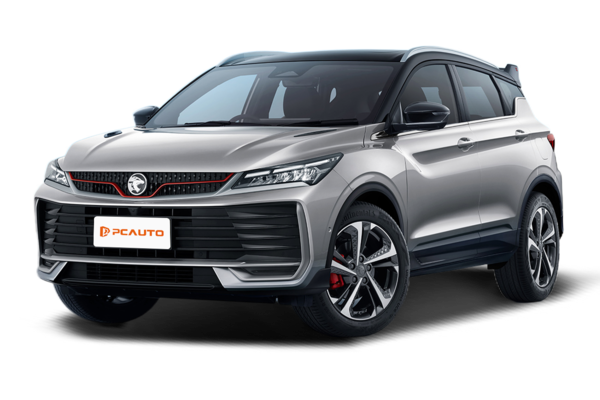
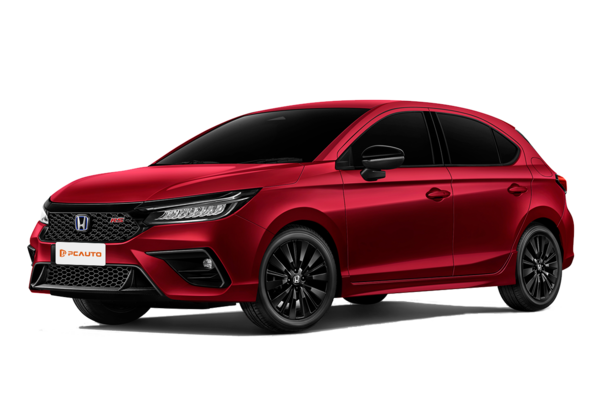
 Cars
Cars